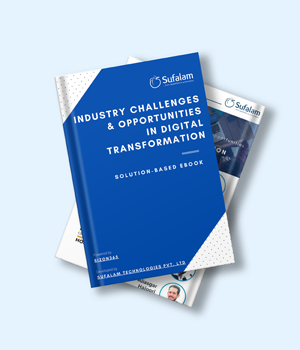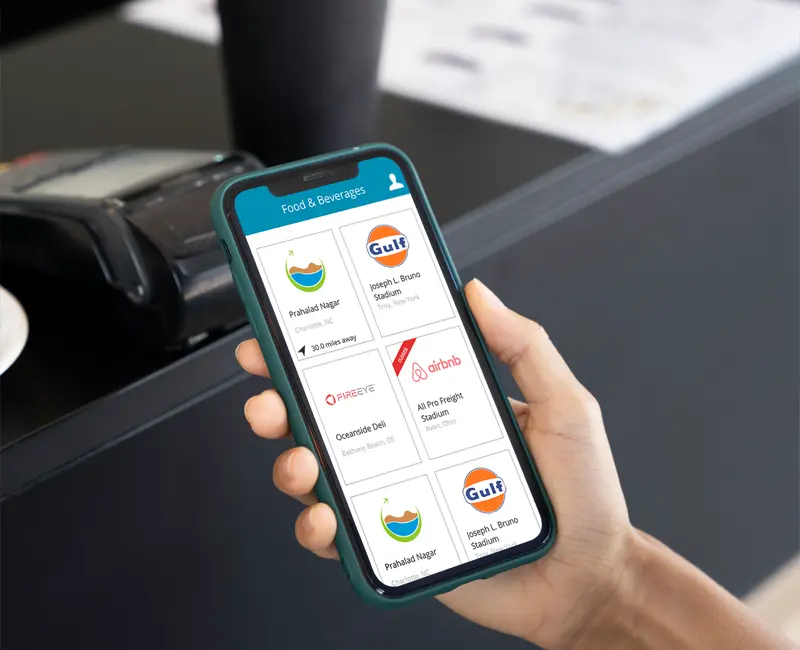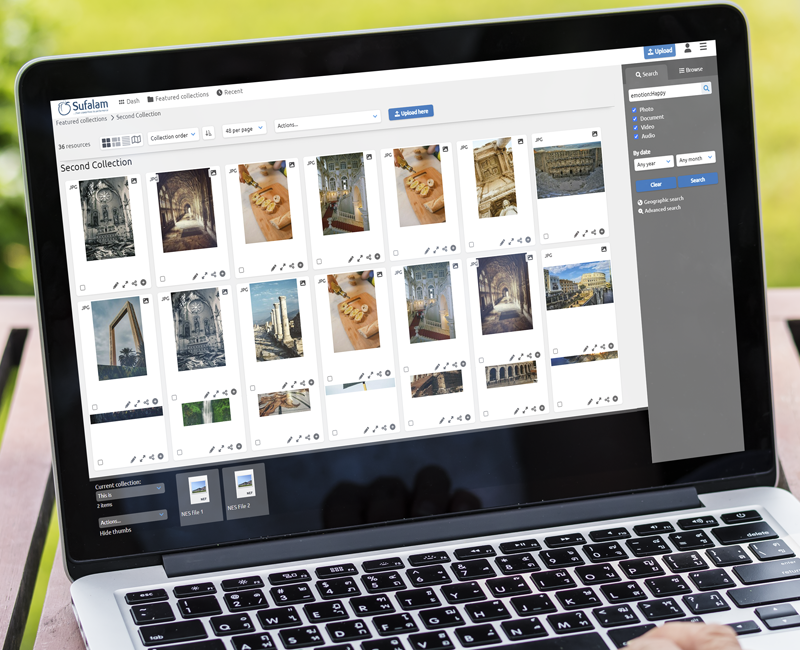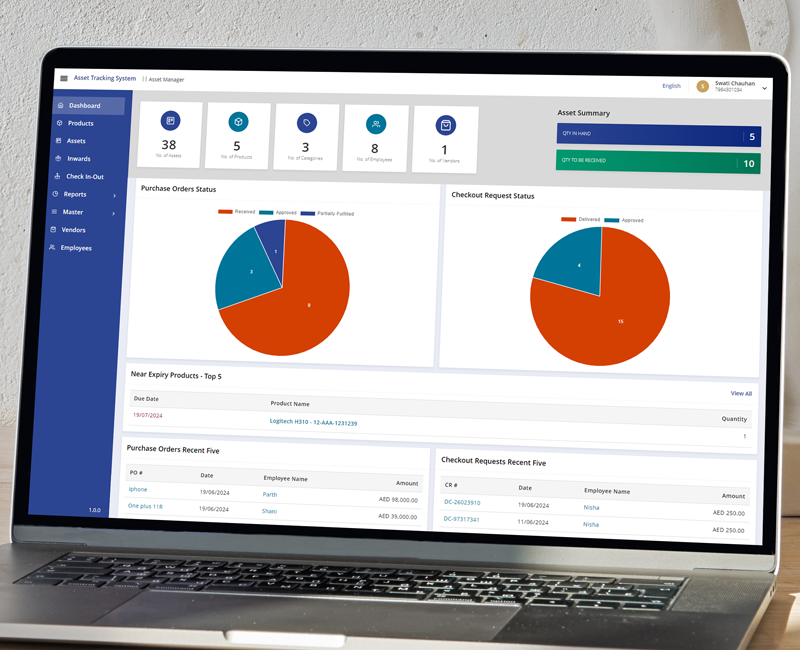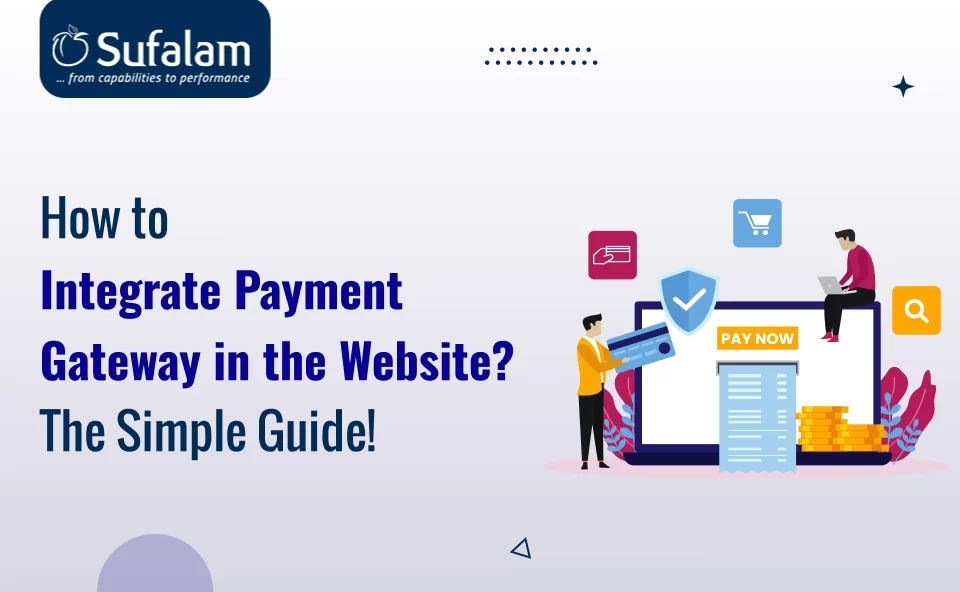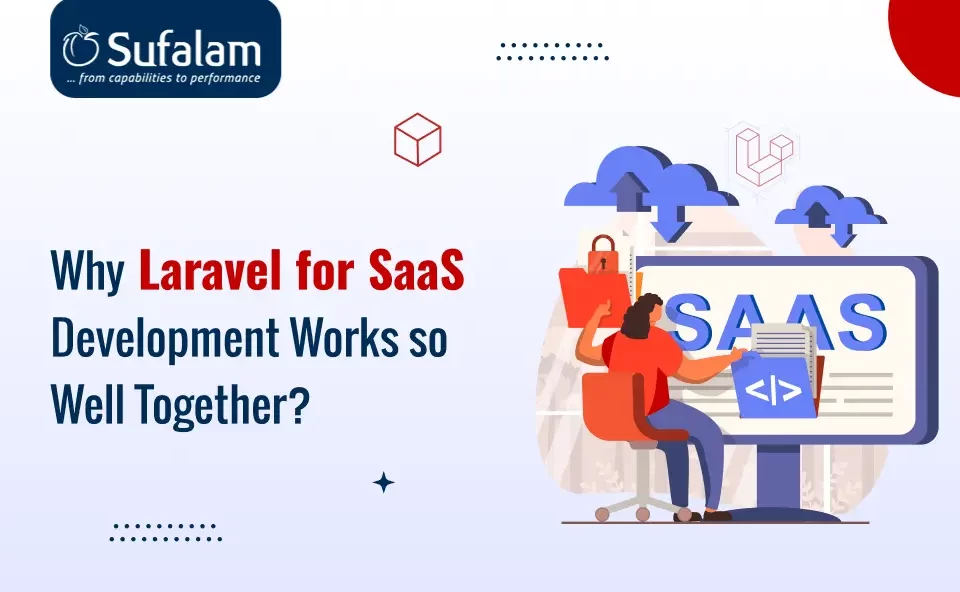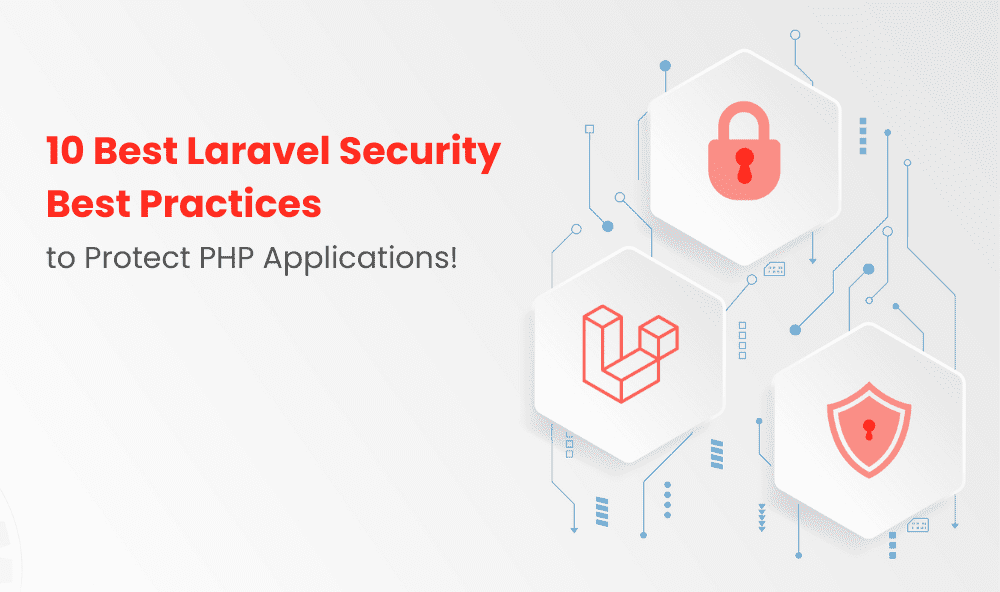
Web applications' security is their priority, so developers must be aware of any potential vulnerabilities and problems that might arise. To ensure that your app is protected, you must address a variety of areas.
Thankfully, the Laravel framework provides a wealth of Laravel security best practices, tools, and procedures. You can utilize this framework with confidence, knowing that Laravel security tools will perform as intended.
We've been using Laravel for almost a decade now, and it has definitely made the development process go more smoothly, particularly because of its focus on safety. However, you may be wondering what precisely makes Laravel the ideal choice and how comprehensive its security features are. In this article, we will take a closer look at Laravel 10 features and practices. Let's get started.
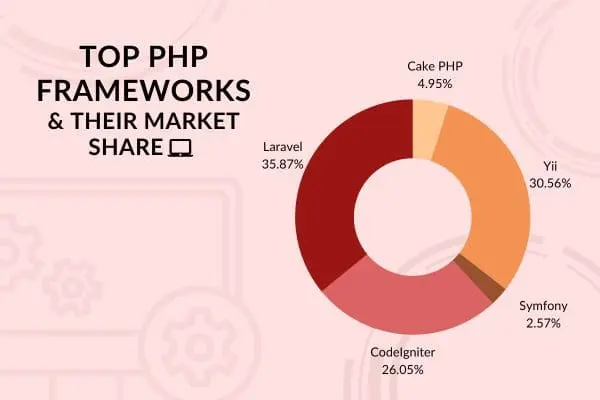
Source: Techjury
What is Laravel?
Laravel is a powerful and popular open-source PHP web application framework known for its robust features, elegant syntax, and strong emphasis on security. It has gained widespread popularity among businesses, primarily due to Laravel practices and features.
Laravel incorporates various security mechanisms and Laravel security best practices to protect web applications from common vulnerabilities. One of the key reasons why Laravel is favored for security is its built-in authentication and authorization systems, which simplify user management and access control, reducing the risk of unauthorized access.
Overall, Laravel's commitment to security and its developer-friendly approach make it a preferred choice for businesses looking to build secure and reliable web applications.
To know more about Laravel's best security practices from the leading Laravel development company, keep reading!
10 Best Laravel Security Features!
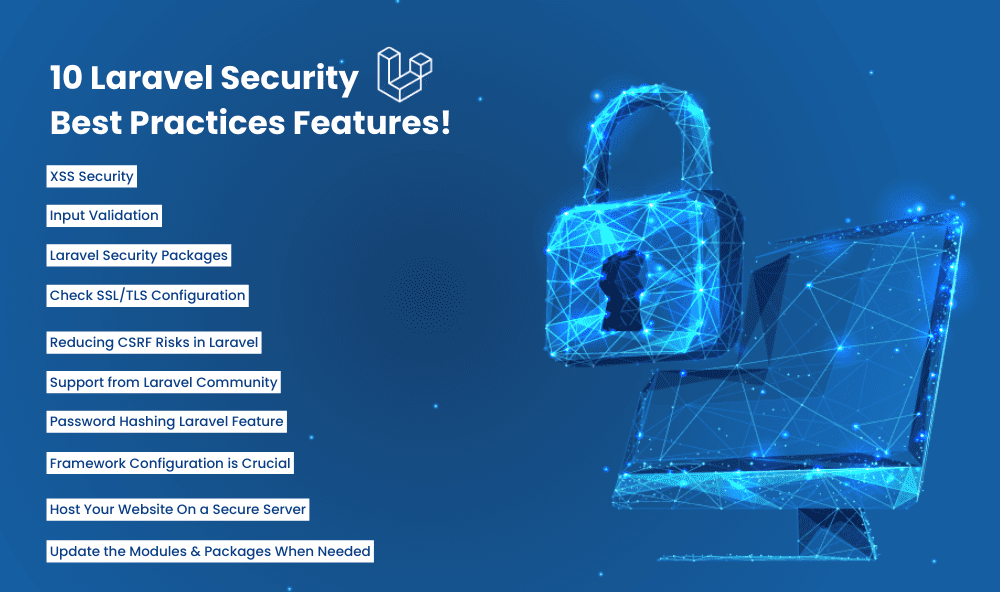
Framework Configuration is crucial
Setting up the various stages of application development effectively — and early — is critical to any project. The.env file in Laravel can be used to configure development and production settings. Since this file contains the application's configuration data, it should never be made available to the general public.
Make sure that the debugging mode is turned off in production. This can be accomplished by setting APP_DEBUG to false. Debug mode is helpful when developing software, but turning it off in production assures that no undesirable errors, pathways, or important system data are visible to the general public.
It is also critical to ensure that an application key has been established for your Laravel deployment. This is employed for symmetrical encryption with cookies, session-signed URLs, and password reset credentials.
Input Validation
To combat security flaws like SQL injection and XSS incidents, Laravel leverages input validation and sanitization methods.
Eloquent ORM by Laravel employs a PDO binding that guards against SQL injections; it aids in preventing SQL injection attacks caused by fraudulent SQL queries. This function makes sure that no client can change the purpose behind the SQL queries.
Additionally, Laravel has native protection against XSS assaults, which immediately engages to safeguard the database. As a result, any code that contains escaping tags is rendered as HTML.
RELATED: Difference Between Laravel and NodeJs
Host your website on a secure server
For your Laravel website, you should constantly search for a secure server host. The hosting server will be loaded with all sensitive and important data and documents linked to your business website.
There are therefore many risks of them being hacked and accessed by outside sources if it is not sufficiently secured. To protect your server, you should also preserve a backup of your website, employ secure passwords, and create authentication and authorization requirements for users. When using a shared server, try to avoid doing so if your website contains any sensitive data.
Here are some questions you should ask your server provider:
- Use a secure connection regardless of the server provider.
- Utilize the Secure Shell (SSH) Protocol and Identification.
- Make use of FTPS (File Transfer Protocol Secure).
- Use Secure Socket Layer (SSL) to transmit data securely
- Uses encrypted networks and VPNs
Password hashing Laravel feature
Laravel indeed provides a robust password hashing feature that contributes to best-in-class security for web applications. The framework employs the bcrypt algorithm as its default password hashing mechanism, which is known for its strength against brute-force and dictionary attacks.
Laravel's built-in functions make it incredibly easy when you hire Laravel developers to securely hash and verify passwords, enhancing the protection of user credentials stored in databases.
Additionally, Laravel automatically salts the hashed passwords, adding an extra layer of security by ensuring that even identical passwords result in distinct hash values.
Support from Laravel Community
In addition to the typical Laravel security measures, it's critical to highlight the outstanding community support that underpins it. The Laravel community, which has over 72.6K followers, acts as an attentive keeper of the framework by continuously updating and correcting any flaws.
Additionally, the Laravel team frequently publishes updates, with minor ones arriving as frequently as weekly and major ones arriving in a year. As a result, any flaws or vulnerabilities are immediately fixed, keeping the framework stable.
Update the modules and packages when needed
You must make sure that your Laravel packages, modules, and plugins are updated often. When a major upgrade is made by a service provider, the modules and plug-ins may no longer be compatible. In other words, they must be updated by the user in accordance with how they are updated.
The performance will suffer and the system will be open to hacking if the modules are not updated. You can continue to verify those modules and plug-ins and perform the necessary upgrades as needed.
When referring to packages, modules, and plugins, nothing has changed. Once more, you must confirm that you are utilizing the packages, modules, and plugins needed for the project. Discarding the unimportant ones is a good idea.
Check SSL/TLS Configuration
Laravel's source is kept under lock and key thanks to the cooperation of committed developers, testers, and pen-testers, making it one of the most secure frameworks available.
It's crucial that you inspect it daily in terms of ensuring the best possible Laravel security. One of the primary things you should pay attention to is if your server's SSL/TLS setup is appropriate and up to date. Not to mention, check sure you're not employing any weak ciphers or an outdated version of TLS.
Additionally, you must utilize genuine security certificates and avoid utilizing weak keys in conjunction with them. You might encounter many more problems, and routine scanning will help you find the trouble spots quickly.
Reducing CSRF Risks in Laravel
When an attacker deceives a user into acting on a web application that has already been authenticated for them, CSRF occurs. The purpose is to cause users to send activities, allowing attackers to obtain access instead of the authorized user.
For instance, an email or message platform that supports picture embedding with hidden form data created using JavaScript is a frequent tactic used by attackers. The attacker gains access while the users are completely unaware of what has transpired.
When it identifies unauthorized or outside entry through such emails and photos, it immediately enables CSRF protection and issues an HTTP 500 error.
XSS security
The pre-installed Laravel Security Packages aid in defending the system from XSS attacks. When this occurs, the assaults use JavaScript codes to enter the text area, such as the comments section of a blog article. For instance, the attackers employ the script below with bad intentions.
Even though the provided code isn't totally malicious, the system would be exposed because there isn't adequate XSS security. As a result, every time a new visitor loads the impacted page, JavaScript would load again, which would interfere with system immunity.
In this regard, the native Laravel Security support comes with built-in tools that launch and secure the database. The structure then produces any code that has escape tags as standard HTML.
Laravel Security Packages
To improve the security of its applications, Laravel provides several packages. Keep reading to learn about the most well-known Laravel security-focused packages.
- Laravel Security Component: The Laravel security component primarily secures roles/objects and incorporates the Symfony security core into Laravel. To verify its security, it employs voters to examine the privileges granted to various roles based on their respective duties.
- Laravel Security: One of the most popular packages, Laravel Security is renowned for eradicating XSS flaws from the source. It has been converted to Laravel 5 from Codeigniter 3.
- Laravel-ACL: Laravel-ACL gives the Laravel authentication process role-based secured capabilities. The package assists in the protection of routes and CRUD controller functions in applications.
To conclude
Despite Laravel's excellent out-of-the-box security features, it's still crucial for developers to be aware of potential security issues and take precautions to safeguard their apps.
Follow these Laravel best practices to keep your Laravel web project safe and protected. You can dramatically improve the security of your Laravel web application and guarantee a safer user experience by adhering to these best Laravel security practices. Keep in mind that maintaining web application security calls for frequent changes and supervision.
Hiring a top web application development company like Sufalam Technologies can be a big help if you want to create a feature-rich web application with the best Laravel security features. They can effectively establish and maintain these security procedures since they have the expertise and knowledge needed.
Stay watchful, stay secure, and look into hiring Laravel developers to fortify your application's protections.
Frequently Asked Questions
Is Laravel more secure than PHP?
Laravel is a PHP framework designed with security in mind, so when used correctly, it can provide Laravel’s best practices and features compared to raw PHP. However, it ultimately depends on how well developers implement security measures in their Laravel applications.
What are some of the Laravel migration best practices?
Here are some of the Laravel migration best practices to maintain the safety and security of your web app:
Laravel enables versioning of database schemas.
Supports easy reversal of migrations, helping with database changes’ reverting.
This platform offers a concise way to define table columns and indexes.
Wraps migrations in database transactions, ensuring data consistency.
Laravel provides different configurations for development, testing, and production environments.

